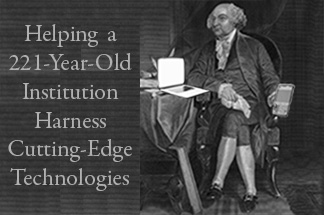Helping a 221-Year-Old Institution Harness Cutting-Edge Communication Technologies: Research Findings to Enhance Congressional Contact with Constituents and the Media
New technologies are transforming day-to-day life on the Hill, forcing Members and their staffs to adapt to changing circumstances in innovative and cutting-edge ways. Here are some of the major changes occurring currently, and opportunities that have yet to be seized:

• The implosion of the traditional “dinosaur media” has contributed to a splintering of how constituents receive information.
It has also occurred in tandem with the rise of “social media,” with implications that remain unclear for Members of Congress. A growing amount of attention on the Hill is being showered on constituents who have embraced social media, but whether this is a wise allocation of limited resources remains an open question.
• The advent of tele-town halls means massive numbers of constituents are being touched personally by a Member of Congress, but overall penetration rates remain extremely low. Furthermore, the valuable data generated by conducting these events has yet to be tapped by most offices.
• A similar under-use of data is found with Congressional websites. Tracking software such as Google Analytics enables Members to know remarkable amounts of information about the ways visitors locate their website, how long they visit the site, and what information is most often accessed during a visit. Yet, most Members fail to track and use this readily available data.
• The days of “snail-mail” correspondence from constituents are over. Most of the correspondence Members receive from constituents today is via email, and it is increasingly common for Members to reply through that same medium. Managing an ever-growing workload of electronic correspondence in House offices is becoming a growing challenge, one that some offices are meeting far more efficiently—and cost-effectively—than others.
In addition to the findings on current communications operations, the report includes a list of suggested “Best Practices” for congressional offices to implement.
This is the latest of the Congressional Institute’s study on improving communication between Congress and its constituents. Follow these links for our reports on Congressional Facebook pages, Congressional Websites and E-Newsletters and Congressional Tele-Townhall Meetings.